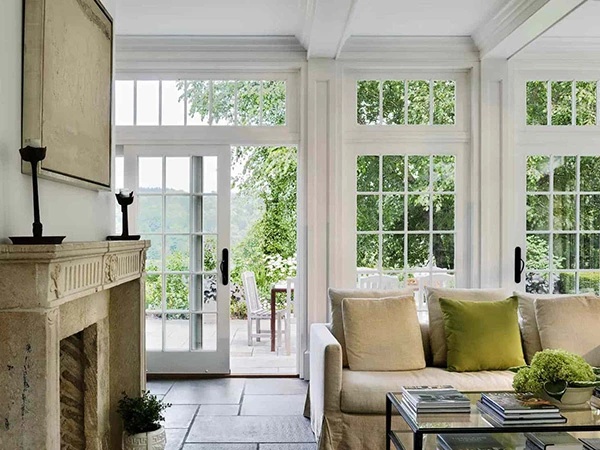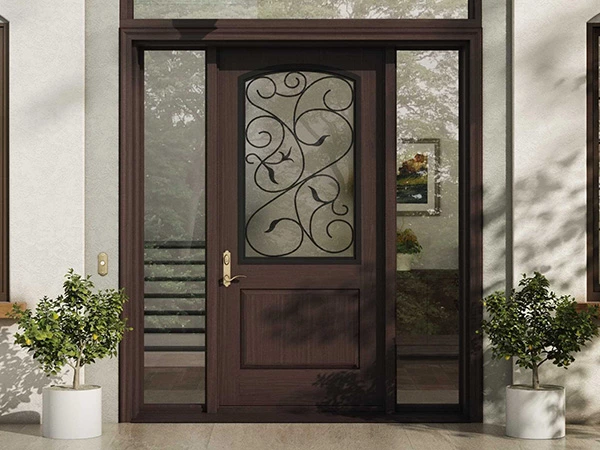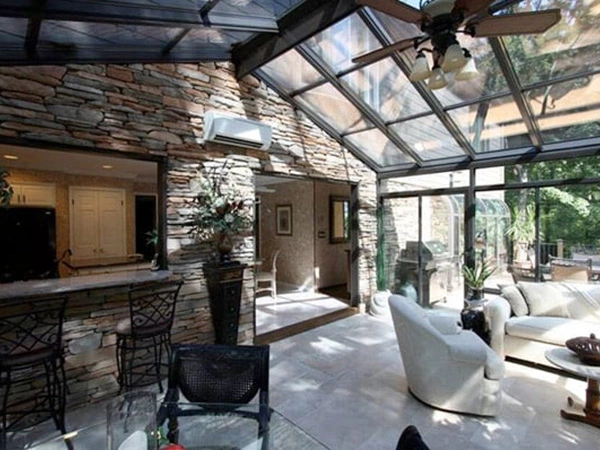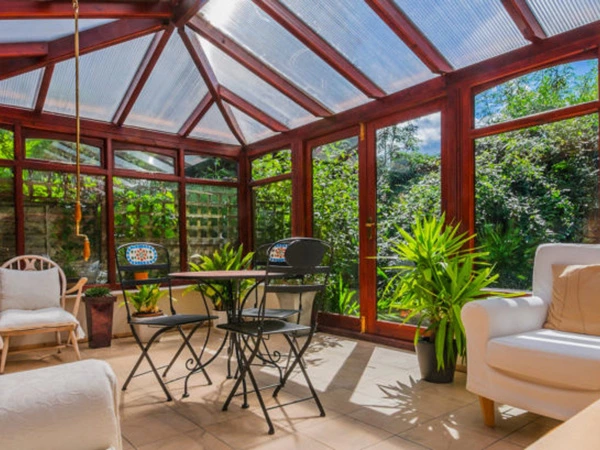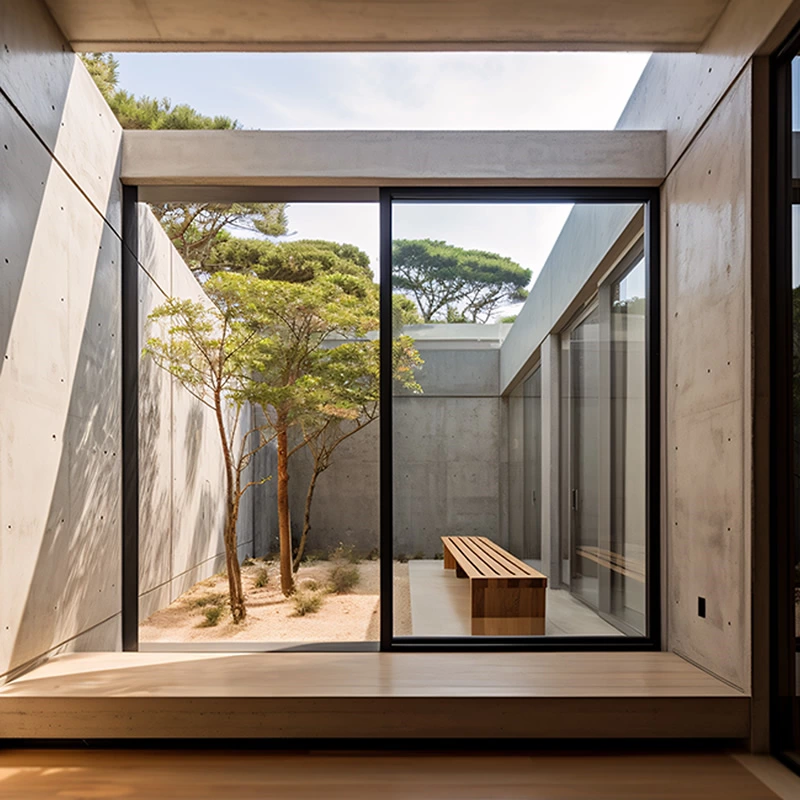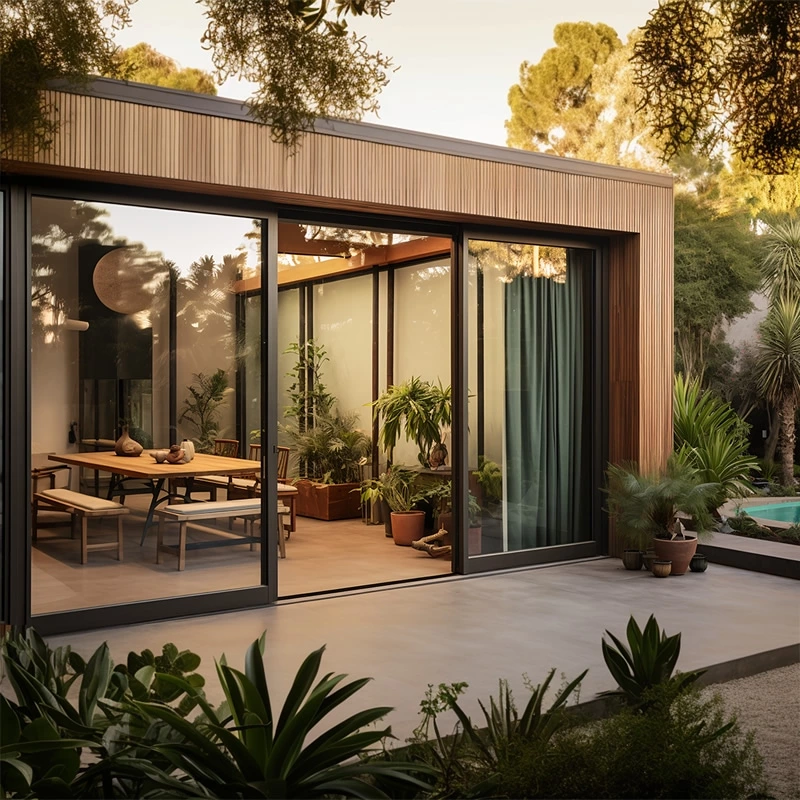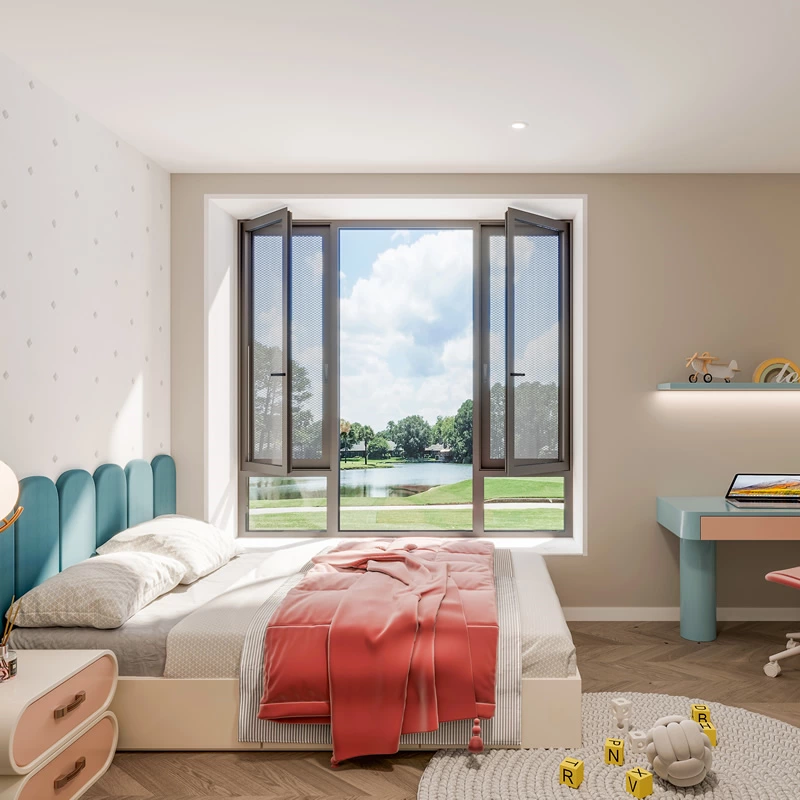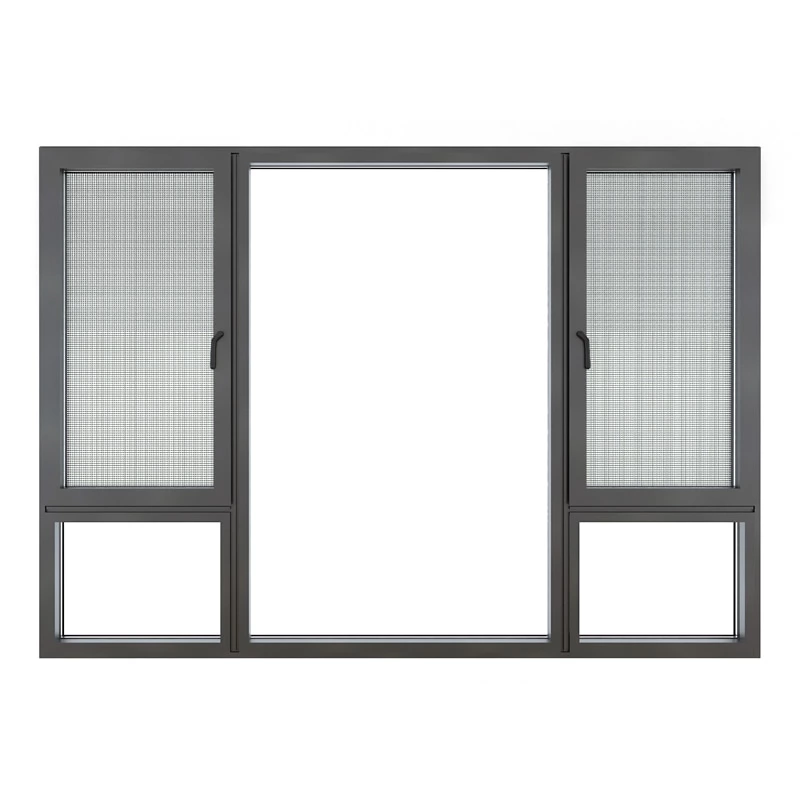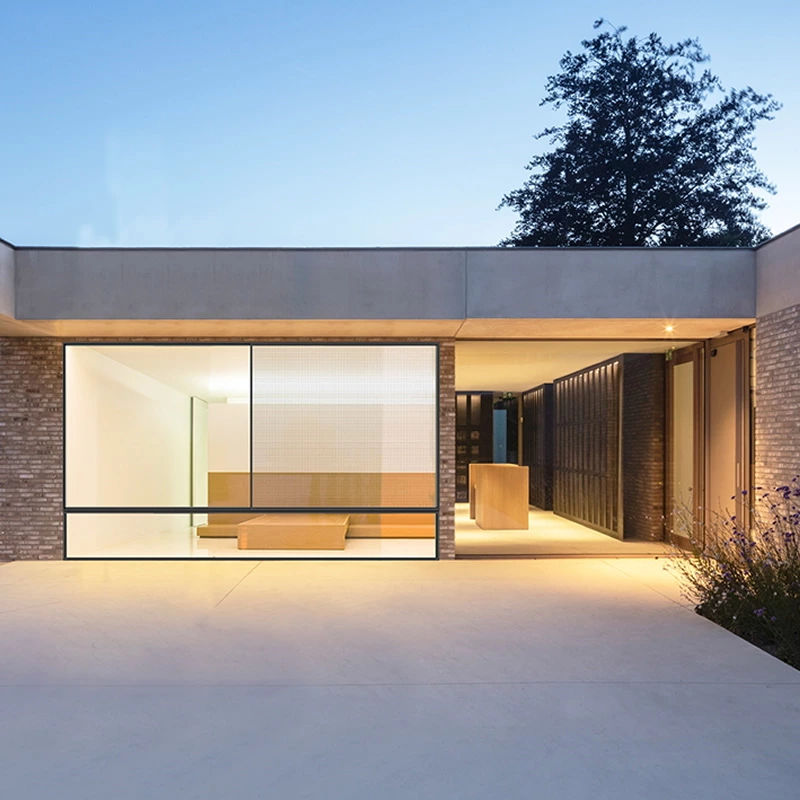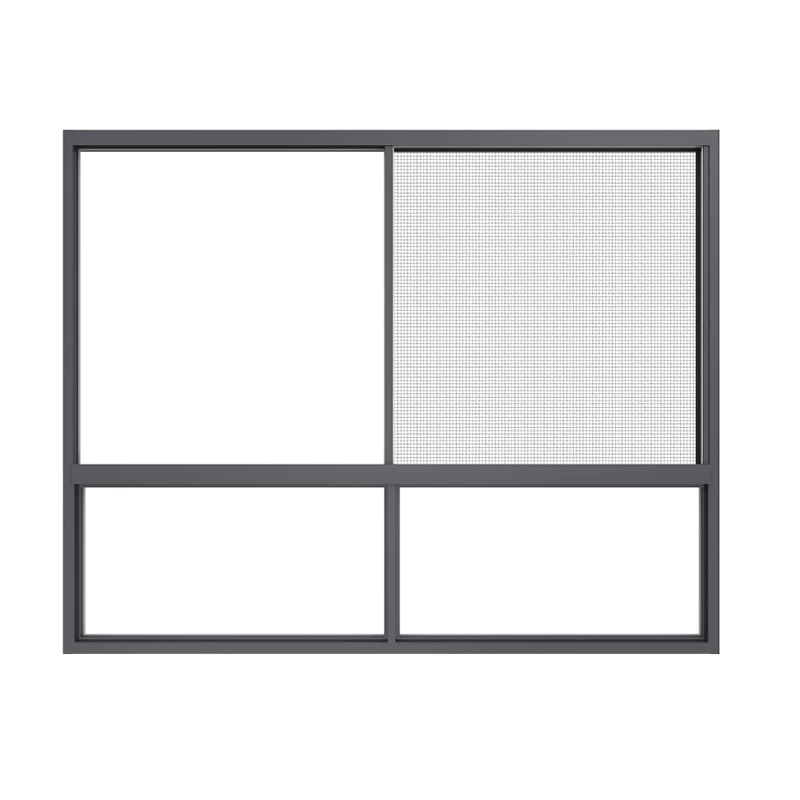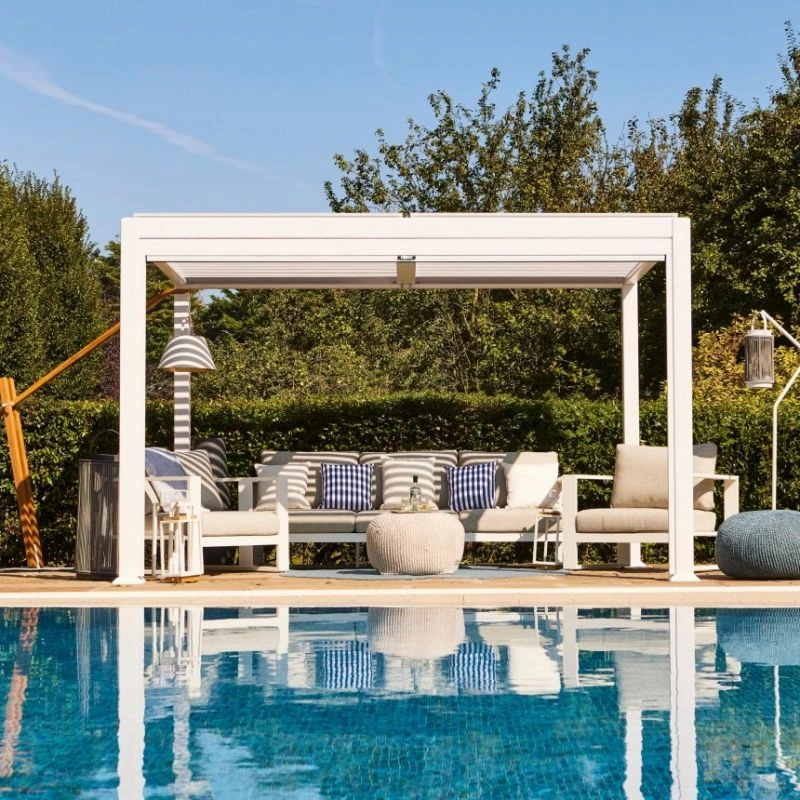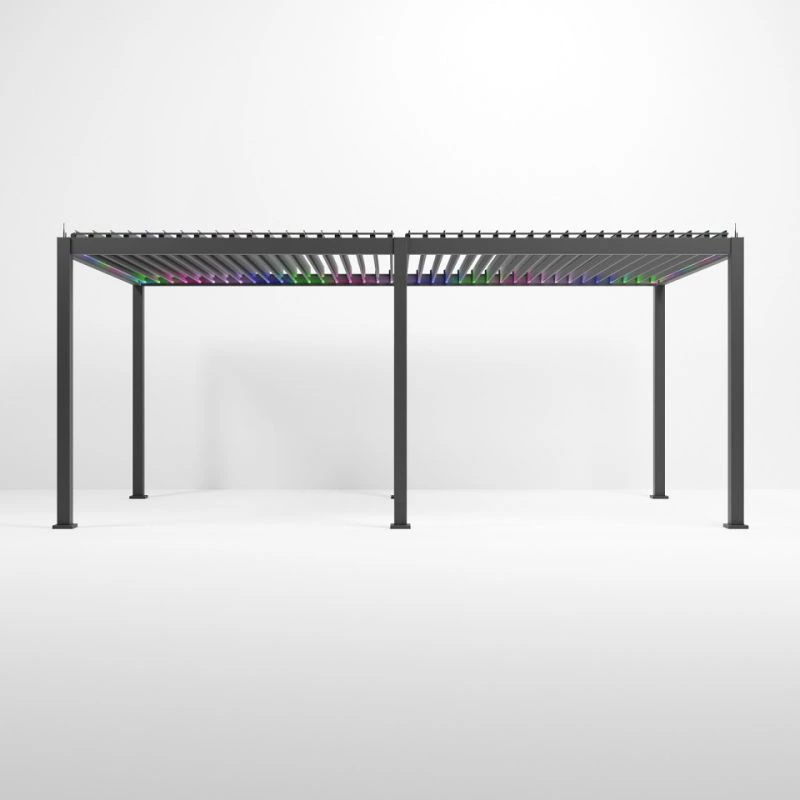In European and American garden design, gazebos and pergolas are two iconic elements that elevate outdoor living. While they may seem similar, their distinct functionalities, structures, and applications make them suited for different needs. This article explores their differences through the lens of aluminum construction, with real-world international examples and USD pricing, to help you design your ideal outdoor space.
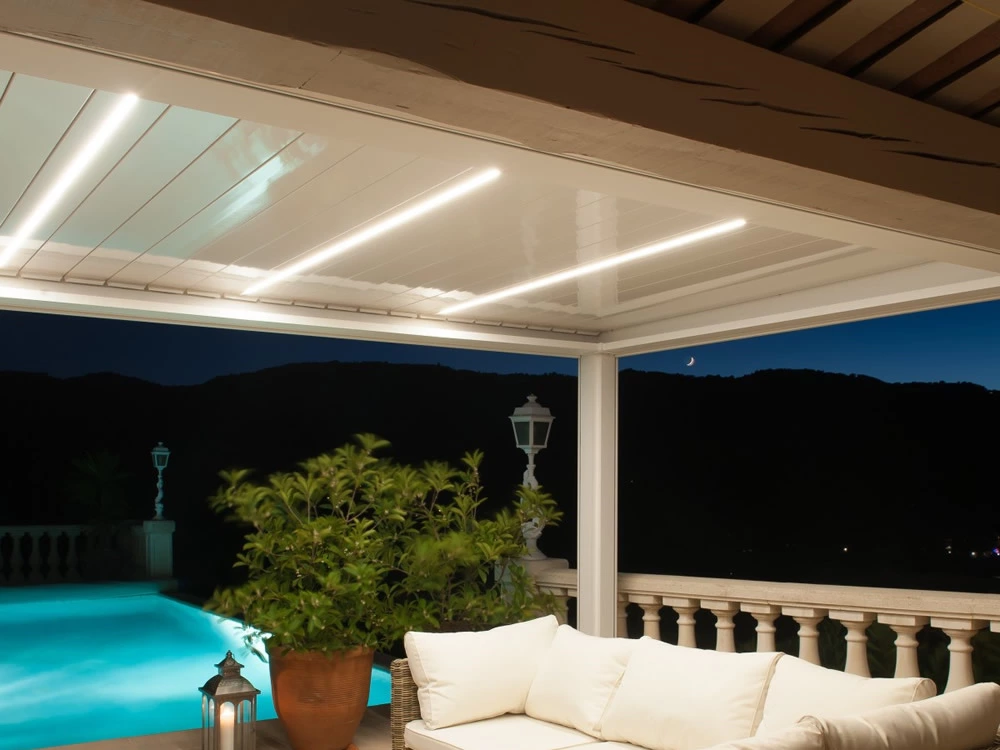
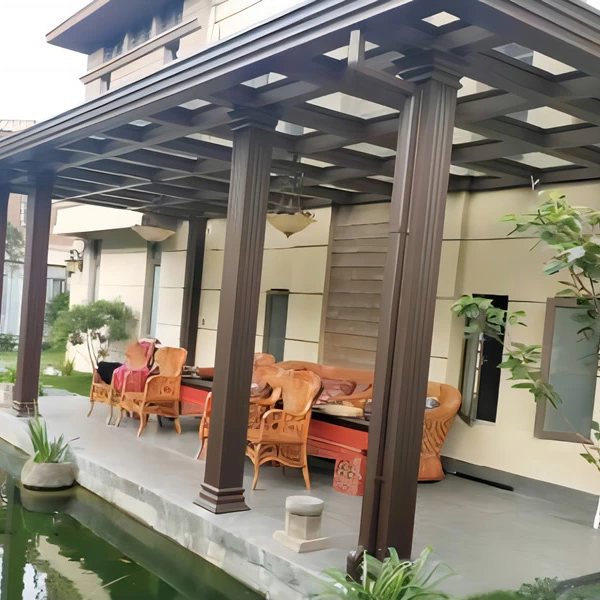
I. Definitions & Structural Differences
1.Gazebo
Fully Enclosed Roof: Aluminum gazebos typically feature solid arched or peaked roofs for 360° shade and rain protection, ideal as standalone lounging or entertainment spaces.
Sturdy Framework: Pillars + railings + fixed base ensure stability and privacy, often placed in garden centers or poolside areas.
Case Studies:
California, USA: A 3m×3m aluminum gazebo with rust-proof coating and built-in LED lighting costs 8,000–8,000–12,000 (installation included).
London, UK: A custom 4m×4m aluminum gazebo with wood-grain finish: 15,000–15,000–20,000.
2.Pergola
Open Slatted Roof: Aluminum pergolas use parallel beams to filter sunlight, often paired with climbing plants or retractable shades for adjustable coverage.
Transitional Design: Connects buildings to gardens or extends patios, emphasizing spatial flow.
Price Examples:
Florida, USA: A standard 4m×3m aluminum pergola: 3,500–3,500–6,000.
Sydney, Australia (USD equivalent): Custom laser-cut pergola (same size): 7,000–7,000–10,000.
II. Functionality & Use Cases
| Feature | Gazebo | Pergola |
|---|---|---|
| Weather Protection | Full coverage (rain/sun) | Partial shade; requires add-ons |
| Privacy | Self-contained, high privacy | Blends with surroundings |
| Style Compatibility | Classic/modern designs | Rustic or Mediterranean aesthetics |
| Maintenance | Low (wipe-down only) | Plant care + shade fabric updates |
Recommended Applications:
Gazebo: Outdoor dining ($8,000+ budget), children’s play area, all-weather use in rainy climates.
Pergola: Small garden shade ($3,500+ budget), climbing rose/grapevine support, transitional kitchen-garden spaces.
III. Why Aluminum Dominates Modern Gardens
Aluminum is the top choice for gazebos and pergolas in premium markets due to:
1.Durability: Resists corrosion, saltwater, and humidity (ideal for coastal homes).
2.Lightweight: Easy installation with minimal foundation requirements.
3.Eco-Friendly: 100% recyclable, aligning with sustainable trends.
4.Customization: Powder-coated finishes or wood-grain textures (e.g., Alumiere’s “aluminum-wood” series).
Price Comparison (USD):
| Material | Gazebo (3m×3m) | Pergola (4m×3m) |
|---|---|---|
| Traditional Wood | 10,000–10,000–15,000 | 5,000–5,000–9,000 |
| Aluminum | 8,000–8,000–12,000 | 3,500–3,500–6,000 |
| Aluminum-Wood Composite | 12,000–12,000–18,000 | 7,000–7,000–10,000 |
IV. Decision Checklist: 4 Questions
Q1:Budget Constraints?
Pergolasstartat 3,500butfactorinplants/shades(3,500∗∗butfactorinplants/shades(200–$500/year).
Q2:Need All-Weather Use?
Prioritize gazebos in rainy regions (from $8,000).
Q3:Prefer Natural Aesthetics?
Pergolas + climbing plants (e.g., wisteria, 100–100–300 planting cost).
Q4:Low-Maintenance Priority?
Aluminum gazebos require near-zero upkeep; wood needs annual sealing ($500+/year).
Conclusion
Gazebos and pergolas balance “enclosure vs. openness” and “independence vs. integration.” Aluminum enhances both with durability and design flexibility. Whether you envision a Mediterranean-inspired pergola (4,000–4,000–8,000) or a sleek Nordic gazebo ($10,000+), aluminum structures deliver long-term value for modern outdoor living.
